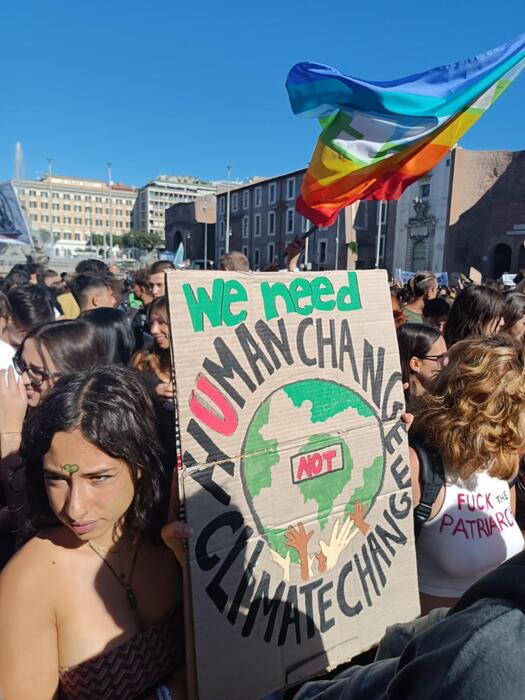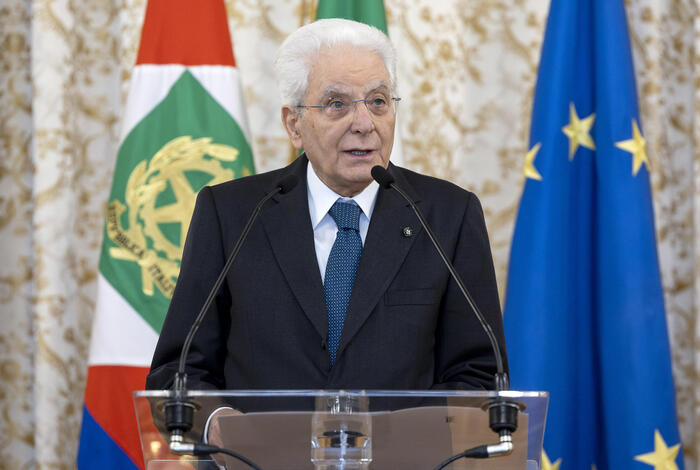The Chassidic movement that is perpetrated by the Baal Shem Tov established the rule that "the Torah is eternity and belongs to every person and at all times."
A second rule that was emphasized regarding holidays and festivals was that each holiday is a ritual, an event, a happening, that repeats the original initial story.
If so, what is the initial event that Rosh Hashanah repeats?
Rosh Hashanah is presented according to this mystical Hasidic tradition as a sacred time, in which the spiritual meaning recurs to the moment of creation.
The creation of the world involves the acceptance of the Aryans in the myth of reduction: the infinite light that filled the entire space converged or compressed to allow a so-called empty point from divinity, where the world will finally appear as the last real object of spiritual sublimation processes.
If so, Rosh Hashanah as a holy time is perceived as a holiday that repeats the formation of time itself. It repeats the most initial experience of "then in nothing" into the formation of the existent, and finally the world. This is how the experience of anxiety that accompanies Rosh Hashanah from a psychoanalytic point of view also becomes clear. On the religious and mystical level, when man re-realizes within himself the experience of reduction, it is a moment of awfulness, of the expansion of the systems and affiliations that hold it, a moment naked from the conditioning, before all. On the psychological level, it is a kind of convergence to the nuclear self, a stay originally before the new nobility and expansions into the new space of time - some while negating things that are outdated and some while having the courage to recharge.
The popular saying "all beginnings are difficult" becomes relevant for Rosh Hashanah. It is not just awe related to punishment but awe of another kind - awe of exaltation, awe of respect for the formation itself.
In the Midrashic tradition of Chazal Rosh Hashanah involves, among other things, the myth of the establishment of the cosmos itself that stretches from a primordial point which is the drinking stone. The stone, which is the cornerstone of the world itself Chaos, and at the same time strong, carries and contains. Here its nature stands out as a bridge. It is in contact with the abyss but also allows order.
Fear of parting from the pain
Rabbi Nachman of Breslav (1772-1810) united two planes of meaning of Rosh Hashanah - also a holiday that represents a mystical return to the moment of beginning, which speaks of reduction, the initial act of infinite light, and also a holiday that speaks of a personal God who shoots a cosmic cornerstone. Through this synthesis R. Nachman suggests in a brilliant move that in the drinking stone is engraved the genetic code of reduction. In this way R. Nachman saw not only the drinking stone but also the Tzaddik himself.
The reduction according to R. Nachman's method may represent not only the beginning when it was necessary to shrink so as to create space for the world as an "other" object of God himself, but the reduction can often be replicated in reality itself and even in man, as a kind of compression that is not always best. Resulting from the center. Paradoxically what was required for survival or existence itself thus also becomes a basis for delay. Compression, necessary for the creation of space, is a texture that contains scratches, horror and anxiety - the horror of the confusion between self-cancellation and self-cancellation.
On the one hand, man recognizes the vitality of free space in order to continue the process of creation and creation.
He necessarily recognizes the establishment of the self founded on the separation from the other.
On the other hand, a person sometimes suffers within the process of forming his self as a separate individual.
This is a description of existence as fundamentally traumatic and from its inception, since R. Nachman was an existentialist in nature.
The reduction may be the beginning moment that contains a blessing and a curse together.
Compression touches the core of existence, the specificity of the self, its uniqueness.
Even in the difficult places to release pain, suffering and conditioning, which were the basis of existence itself, the inconceivable specificity and uniqueness of each person is possible.
The sweetening of the law
What is actually mixed in it, in this initial cell? Me and the other, redemption and creation, love and death, individuation and empathy. It can be compared to the singular element, where in this high tension of blessing and cursing the reduction is folded like a crack. Slit light and broke at the same time. Every fracture may be an eye - through which nothingness emanates and illuminates, through which there is stretched, an eye that is both a basis for vision and a source of living water. The anxiety of parting and separating at this point stems from the fact that in the infrastructure itself the pain is also cast, and the person also recognizes this pain with himself and is afraid to part with him lest he be driven by madness or death, lest parting with him impair self-stability and cohesion.
It turns out that there is an inverted pyramid here: the divine infinity is reduced in order to create a world, man for his part must deviate from his reduction into tools to discover the light as the focus of growth and spread.
Each person carries within him his reduction. Man is like a compressed nucleus that if he can only observe, clarify the matrix of its expansion or lead to its re-expansion after convergence and self-re-establishment - his new life will unfold before him from a moment of creation.
This reduction, painfully compressed, was rightly seen by Nachman that it should be sweetened and transferred to the dimension of grace. He saw in it the paradox of a human drinking stone of every man based on a crack and actually seeking stability without sterilizing the dynamics.
The Tzaddik in the method of R. Nachman is close to the position of the teacher - teacher of the generation, spiritual teacher, physician of souls. Is the one that contains all these reductions, all the cracks. The border and the boundaries with him are not a basis for avoiding the world but for constructive and corrective empathy, encouraging the student to spiritual metamorphosis and by no means preventing freedom by planting more and more false boundaries. It is possible that the stone is cracked, it is possible that R. Nachman is increasingly portrayed as a tragic figure carrying pain, but this figure is strong enough to contain all the cracks of another, the pain and the trap of the other. It has an attention and appearance to the reductions of everything, hence the ability to sweeten the reduction.
The sweetening is one of three stages in what the Baal Shem Tov suggested in dealing with the encounter with evil or with the law: submission, havdalah and sweetening. The submission - in access to everything the position of self-emptiness, humility, cancellation is necessary. Only out of this emptiness is it allowed to approach the distinction - the distinction between good and evil, otherwise it will be a projection of internal dichotomies on the external world. Then, once the emptiness or equality has been achieved, the law can be tried and sweetened. But Minister Nachman links the sweetening to the sweetening of the reduction bone. For even in reduction itself there is a law that is a limitation, but this limitation is a condition for the appearance of man as an entity realized in the body (and not only as consciousness).
In terms of creation, reduction is a limit and tools without which man would not have been created.
For man, boundaries and arbitrariness are the conditions and conditions under which man is born.
And it must evolve from within them and beyond.
Since every reduction, every nucleus of existence, is law and limitation by its very nature, Rosh Hashanah, the date of the summons to return to contact with the source, with the drinking stone, return to the nuclear self, necessarily represents both limit and limitation and redevelopment of expansion into the world.
All of these - while forgiving myself and others or the courage to apologize to him, to re-stabilize the expansion as the opposite pole to reduction - are the basis for new creation.
Prof. Pedia is a lecturer at Ben-Gurion University, a poet and writer, a researcher in Hasidism, and chair of the committee on behalf of MLAG and TT for the Advancement of the Humanities in Israel.









